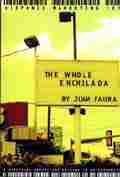But I Don’t Speak Spanish!
Posted by Elena del Valle on September 19, 2005

Author Juan Faura
But I Don’t Speak Spanish!
by Juan Faura
If you don’t speak Spanish, you might be thinking, “How in the world am I going to service these consumers if I can’t speak their language?”
Let’s analyze that. If you are selling a product, it is the product that is going to attract them and serve them, isn’t it? What you want is for the consumers to buy that product. If you are selling a service, the first step is to get them through your door or to pick up the phone.
As we know, there are a number of excellent translation services that can translate your materials, and there are also many small companies that can adapt your ads to fit the market. Once you have the customers calling or coming through the door, it will be much easier to determine the best way to service them, whether that means hiring a bilingual employee, a freelance translation company or a phone interpreter service. The key is to get the customers coming in or buying the product first.
First, Show Respect
The truth of the matter is that the best way to sell any customer coming through your door is to show them respect and to provide them with the attention that they deserve. While language facilitates that, it is not the only way to do it and in fact is not even a prerequisite. Along those lines, I would argue that the use of the following five phrases would immediately engender a connection to any Hispanic consumer, and if you learned not another word of Spanish these five phrases could be sufficient to make your business a Hispanic-friendly business.
Buenos días/tardes/noches (Good morning/afternoon/evening)
Uttering these words when coming upon a potential customer at a store or restaurant, for example, immediately says, “I recognize your culture, and I would like to try to make you feel comfortable in my store.” The Hispanic consumer comes away with the impression that this is a Hispanic-friendly place, somewhere he or she would enjoy returning to.
¿Cómo esta(s)? or Cómo le/te va? (How are you? or How is it going?)
Using this one will probably earn you a smile and a polite “Bien gracias.” Sometimes it may earn you a string of words because it is immediately assumed you speak the language. In either case, you can benefit from this because you will once again be showing respect and understanding.
¿Cómo le/te ayudo? (How can I help you?)
This is a direct way of showing to your Hispanic customers that you are willing and able to help them even though you do not speak the language.
Que le/te vaya bien
The actual translation of this phrase is “May things go well for you,” but for practical purposes it is very similar to “Have a nice day.” This is a casual and easy-going way to say goodbye and at the same time make your shop inviting to your Hispanic customers.
Con mucho gusto or Mucho gusto
This phrase is like a two for one. Con mucho gusto means “With pleasure,” and it is something you would say when you are asked for something or to do something. Mucho gusto means “It’s a pleasure to meet you.”
It seems so insignificant that learning a few phrases in a language can make that much of a difference, but they do. Learn from your customers. When they come in and you greet them in Spanish, listen to how they answer and learn what comes after that. You may not be fluent, but with each bit that you learn you will be deepening your relationship with your customers.
Notice that in some of these phrases there are two ways of saying something. That is because one way is formal and the other is informal. Como le va? is formal and Como te va? is informal, and similarly with the other phrases.
Excerpted from The Whole Enchilada: Hispanic Marketing 101
Reprinted with permission. ©2004 Paramount Market Publishing, Inc., Ithaca, New York (www.paramountbooks.com). Toll-free 888-787-8100.
Purchase "The Whole Enchilada"










